This article was originally published in RC Driver’s April 2015 issue.
By David Harrington
Fully loaded and ready to transmit!
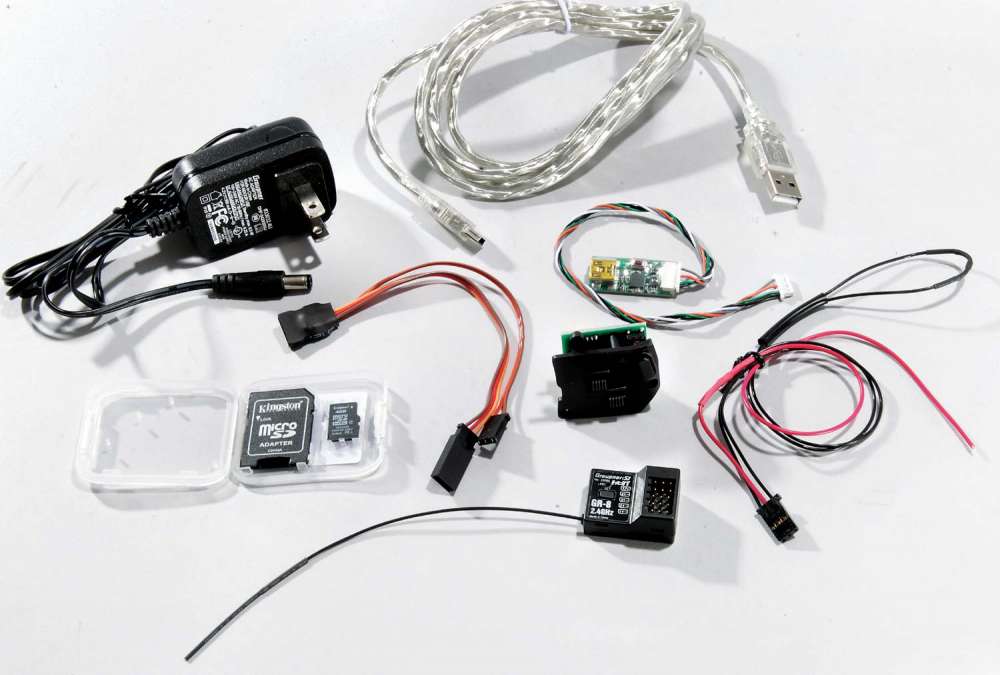
VITAL STATS
MANUFACTURER: Graupner
PRODUCT: X-8N 4-channel telemetry radio
ITEM NUMBER: S1018 PRICE: $249
DIMENSIONS: 9.4 x 6.7 x 5.5 inches (239 x 170 x 139.8mm)
WEIGHT:18.69 oz. (530g), including battery
Graupner is back! Graupner is a company from Germany who are well known throughout Europe for their superb quality products. They are starting to become more well known in the American market thanks to Open Hobby who picked up the American distribution. We’re already seeing Graupner products offered by major retailers like Tower Hobbies. So we should be seeing a lot more from them in the coming months. Graupner specializes in electronic gear, including chargers, ESCs, servos and radio gear. We are going to be looking at their X-8N radio. The X-8N is Graupner’s mid-level radio. While it does not have all the features and the cool touch screen of the soon to be released Graupner X-8E, it does have many high end features for a radio at such a modest price point. I have been using the same radio for a few years and might be stuck in my ways, but when I saw the features of this radio, I was intrigued and had to try it out. You may not realize you want a new radio. Your radio does everything you need; go, stop, turn, and there’s other stuff you never use. After reading this, you just might be considering buying new radio. Let’s take a closer look and see what makes this radio so interesting.
THE GOODS
• The X-8N uses Graupner’s HoTT 2.4 GHz technology, which stands for “Hopping Telemetry Transmission”. HoTT technology uses the FHSS modulation. The HoTT technology is a proprietary system that only works with HoTT receivers and is capable of super-fast response times. Through direct transmission of the data from the main processor to the 2.4GHz transceiver, there are no additional delays via the module processor. That all translates to ultra-fast response times. The X-8N uses the HoTT V2 which can be adjusted down to 6ms, 3ms, and all the way to 1.5ms. The X-8N comes set at 12ms from the factory which will work with all servos and ESCs, but if you turn it down, lesser and some high end electronics will not respond. You will need a really good ESC and servo such as the ones offered by GM Racing to take advantage of the faster latency. You can set the response times to the individual channels, in case you have a good servo but sub-par ESC or vice versa. That is something I think is unique to this radio, especially in this price range.
• As a telemetry system the X-8N can receive information from the receiver, such as receiver voltage, signal strength, and with the included sensor wire you also get motor temps and battery voltage. GM Racing’s Genius Pro 120R ESC (97170) and some of their servos are equipped with telemetry and send feedback to the radio on data such as motor speed. Did you leave your program card at home? You’ll do that on purpose, since all the ESC’s parameters can be programmed via the radio. I’ve got to get one of those speedos!
• Lefties rejoice! The X-8N can be easily converted for left hand use. It just takes two screws to swap the steering wheel, and they even included an extra switch plate, so you can also move the thumb switches to the other side with just a few screws.
• The controls are fully adjustable. Wheel and trigger tension are adjusted via small screws. If you should need more tension they sell a spring set with hard and medium springs (Part # 33000.11) so you can further set it up to your taste. The drop down wheel can swing back and forth in five positions by just loosening two screws.
• If you plug your headphones in you will be guided by a voice prompt. You can also set up the telemetry so that the voice will keep you audibly up to date with your stats and even have it call out times so you can track your lap times or your next pit stop without taking your eyes off the track. There is a lap timer, up or down time and a stop watch, so you have plenty of timers to keep track of your status.
• Firmware updates are available via the provided USB cable and adaptor for the ESC or the microSD card slot. You can also save your models to the card in case you want to transfer your settings to a different radio, as well as
telemetry logs so you can plug the card into your PC and view your data later. A micro SD card is included, as well as the SD adapter, and it contains folders for your saved models, the voice files in different languages, telemetry logs and firmware updates.
• The most common adjustments are all there―trims, subtrims, expo, end point adjustments, servo reversing, etc., but there are also some nifty features like “idle up”, which bumps up the idle for starting a cold nitro engine, and “pumping” which will pulse the throttle to keep your nitro engine running while you refuel. These features can be turned off/on via one of the five assignable switches. The X-8N also has five mixes for the channels. Programming the channel mixes can be a daunting task and this is true of any radio, but fortunately Graupner was kind enough to include mix presets for MOA, 4WS crawlers, tank drive type vehicles and boats. I think that will cover most hobbyists needs; I know I will be further exploring the crawler mode. The expo can be adjusted at two points to create a curve. You can also set servo speed, turn off the telemetry for competition, set up a failsafe and ABS brakes. There is even a hidden mode to set up the voice, firmware updates, stick calibration and access the data port. If you like to fiddle, there is a lot to fiddle with on this radio!
• I have a bad habit of leaving my radio on between races and one good rock crawling outing can kill a set of batteries, so I was excited to see the X-8N comes with a 4000mAh 3.7V LiPo battery. 4000mAh is double the capacity of the average “AA”, so you should expect extended operation time between charges, and because it is lighter than “AA”s you will not get as fatigued when on the driver’s stand for extended periods of time. The battery can be charged by the radio when you plug in the included wall charger.
• When you purchase the optional Bluetooth module (Part # S8351), you can download the free app to your Android device and view all the telemetry statistics on your device with colorful, visually appealing, and easy-to-read gauges.
for in-depth reviews on the latest RC vehicles
THE WORKS
Out of the box the battery in the radio will have enough juice for you to turn it on and check it out, but it is at a storage charge, so it is best to top it off before using the radio. The instructions were rather vague regarding charging, since they assume you’re still choosing between “AA”s and LiPo and do not acknowledge the included charger. I plugged in the included wall charger, and there was no kind of indication that it was charging but turning the radio on after a few minutes revealed that the voltage was coming up. It took about five hours to top off. Turning the radio on, the screen is clear and easy to read. You are immediately greeted by a prompt to turn the RF signal on or off. This may seem a little annoying but is actually good because when the receiver is off, it will beep constantly as a warning, so it is nice to be able to turn the RF off when you are just messing with the programming. I installed the receiver in my Hyper 10 SC. I chose this car for the test for a specific reason. The high torque 550 motor and high speed high torque servo are power suckers, which can leave no juice for the receiver and cause brown-out. I have to run a “glitch buster” capacitor in this car and I was curious whether The Graupner system would require a glitch buster. Swapping receivers was quick and easy. I slipped the loop for the temperature probe around the motor. There is a third wire that goes to the positive on your battery connector. I chose not to install that one, as I would have to solder it and I’m not sure this system will stay in this car, but if I did hook it up, it would be handy to monitor your battery voltage in a race situation to let you know when to back off so your battery doesn’t dump before the end of the race. I turned the car on and the servo jerked all the way to one side. It should have been bound from the factory but I was not getting a signal. It is a good idea to disconnect the linkages before your first start-up so you do not damage the servos. After consulting the manual I was able to quickly bind it up. I like that the receiver has a bind button on it so you don’t have to worry about finding one of those little plugs when you’re out in the field. Then I had a signal but the ESC was still not responding so I had to reverse channel 2, which I was expecting. There are four pages of functions in the menu, which can seem overwhelming, but all the most common stuff is right on the first page. So I was able to navigate the menu and make changes without really needing the manual. The radio feels comfortable, so I didn’t really need to make changes but since I can, I did. The steering tension felt fine to me, but I like more tension on the trigger because I feel the tension helps me drive smoother. I tightened up the screw on the trigger with a 1.5mm hex driver until it bottomed out, which was close, so I backed it off a little and it was perfect for me. The angle of the steering wheel felt fine, but I thought it might feel better if it was more in line with the trigger. To adjust the steering wheel’s angle, I just had to pop the plastic cover off and loosen two screws. I was able to move it one click forward and then it felt perfect for me. I have really skinny fingers and the trigger gripped my finger tightly, which is good, but I realize most people have larger fingers than I do. I checked and found that you can adjust the width of the trigger and it was in its narrowest position. With everything feeling comfortable in my hands, I went out for a drive. Pulling the throttle, the control did feel very smooth. I can’t say I noticed a huge difference from my usual radio, but it did seem smoother. I needed to trim the steering out a bit and at first I was thrown off a little because the trim goes from 0-99, so each little click didn’t make a huge difference, but it is nice to have such fine tuning over the trim. As the trim moves the tone of the beep changes so you can hear how far off center you are. The trim buttons are rubberized and it was very easy to make trim adjustments with my thumb while driving. After steering and powering the car around I was happy to see no brown-outs. The receiver is obviously a lot more efficient than the one I’ve been using. I was curious to see where my motor temps were running and it said 39 degrees Celsius. Celsius! I could not find anything in the manual or menus to switch to Fahrenheit. Maybe that can be changed in the firmware; meanwhile I have to learn to convert to Celsius. 39 degrees Celsius is 104 Fahrenheit, by the way. When you shut the radio down, you’re greeted with an important reminder, “Enjoy your hobby!” I could take up half the issue checking out all the features of this radio, but the main test I wanted to try was determining how difficult it would be for the average user to get up and going. Other than the vague instructions regarding charging the battery, I found it very easy to get up and running. The basic functions are right there and easy to access and the more advanced functions are there when you need them.
WRAP UP
There are numerous mid-level radios on the market, but the two big ones that this radio will be going head-to-head with are the Spektrum DX4S, and Futaba 4PL. The X-8N is priced dead-on to compete with these radios and has similar features but when you start to really break down what you get with the price tag and the future potential with Graupner’s accessories, it really starts to seem like a bargain. I was really impressed with the quality and ease of use and would recommend it to any RC enthusiast but I really think serious hobbyist involved with various aspects of RC will appreciate this radio. I can also see this being someone’s first radio for racing that will take them to the highest levels of competition without having to sink all their dough on the radio.
LINK
Graupner openhobby.com
 RC Driver The Best In RC Car & Truck News, Reviews & Video
RC Driver The Best In RC Car & Truck News, Reviews & Video 


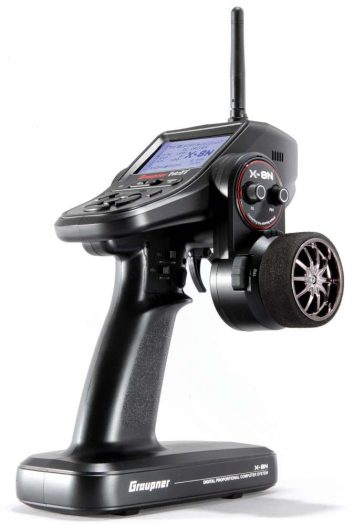
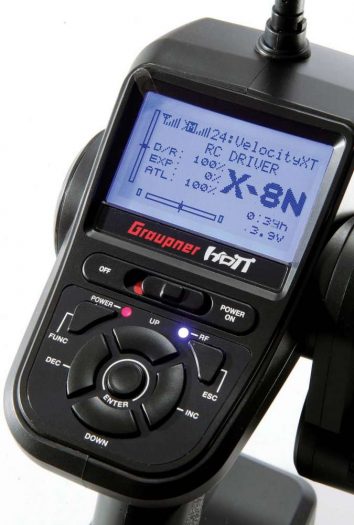
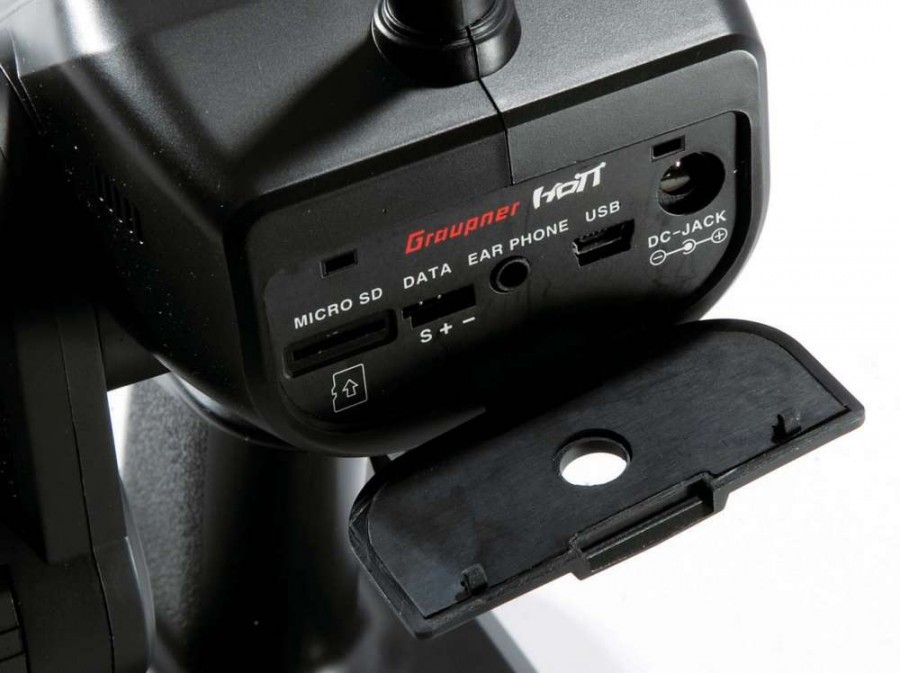
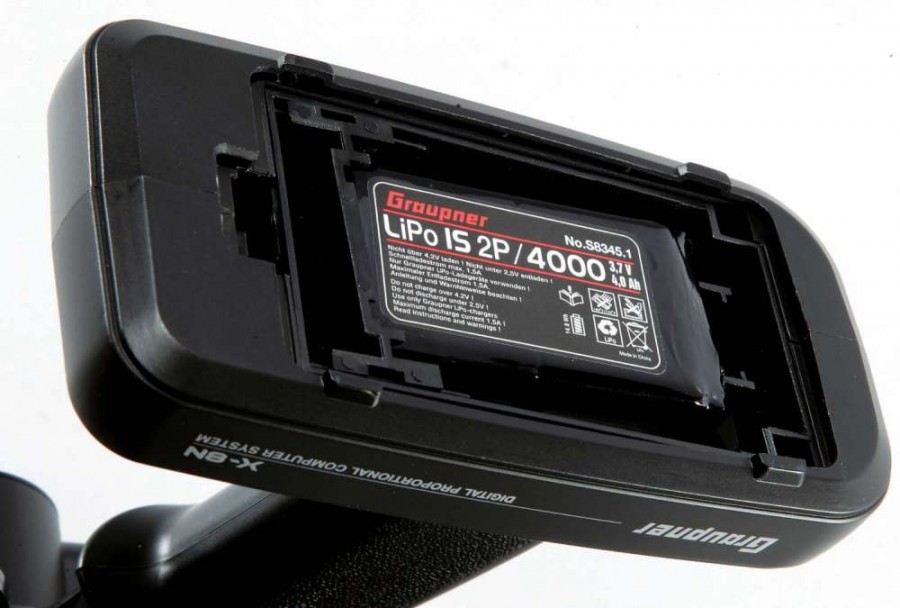






I see that you mentioned that servo speed can be adjusted in your review, but did you actually test this feature? Main reason I’m asking is that I’m finally getting around to using this feature and it’s not working properly for me. At 99% speed, the servo jitters uncontrollably, then at 95% the servo moved so painfully slow that the car is not driveable with anything less than 100%. I’m using a HobbyWing V.31 ESC and Savox 1258 Servo. I looked up the firmware and don’t see any updates that address the servo speed feature:
https://www.graupner.com/News/Radio-Control-X-8N-HoTT-4-channels-Version-2v014/